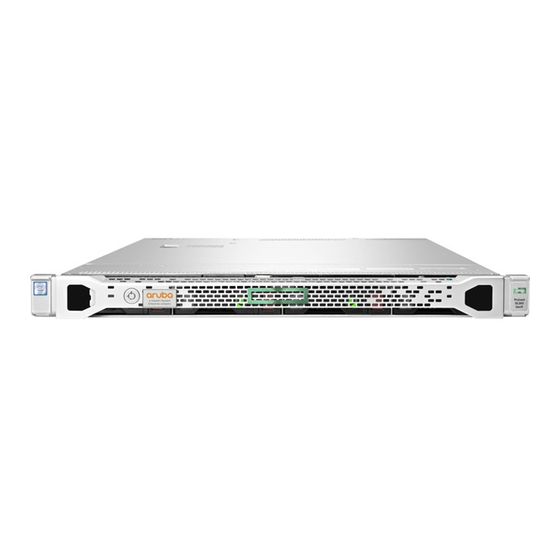
Table of Contents
Advertisement
This Getting Started Guide describes the procedures for installing and configuring ClearPass Policy Manager on
a hardware appliance, as well as how to install ClearPass on a VMware vSphere Hypervisor host and on a host
that runs Microsoft's hypvervisor, Hyper-V™.
Due to a negative performance impact when ClearPass 6.7 is installed on a KVM appliance, Aruba will not post the
KVM image with this release. For more information, refer to the "6.7.0 Upgrades on KVM Hypervisors are Deferred"
section in the ClearPass 6.7 Release Notes.
This Getting Started Guide provides the following information:
About the ClearPass Access Management System
l
Setting Up the ClearPass Hardware Appliances
l
Using the VMware vSphere Hypervisor Web Client to Install ClearPass on a Virtual Machine
l
Using Microsoft Hyper-V to Install ClearPass on a Virtual Appliance
l
About the ClearPass Access Management System
This section contains the following information:
ClearPass Access Management System Overview
l
Supported Browsers
l
Key Features
l
Advanced Policy Management
l
ClearPass Policy Manager Hardware and Virtual Appliances
l
ClearPass Specifications
l
ClearPass Access Management System Overview
The Aruba ClearPass Access Management System provides a window into your network and covers all your
access security requirements from a single platform. You get complete views of mobile devices and users and
have total control over what they can access.
With ClearPass, IT can centrally manage network policies, automatically configure devices and distribute
security certificates, admit guest users, assess device health, and even share information with third-party
solutions—through a single pane of glass, on any network and without changing the current infrastructure.
Role-Based and Device-Based Access
The ClearPass Policy Manager™ platform provides role-based and device-based network access control for
employees, contractors, and guests across any wired, wireless, and VPN infrastructure.
ClearPass works with any multivendor network and can be extended to business and IT systems that are
already in place.
ClearPass 6.7 Getting Started Guide|
ClearPass 6.7 Getting Started Guide
1
Advertisement
Table of Contents



Need help?
Do you have a question about the ClearPass Policy Manager C1000 and is the answer not in the manual?
Questions and answers